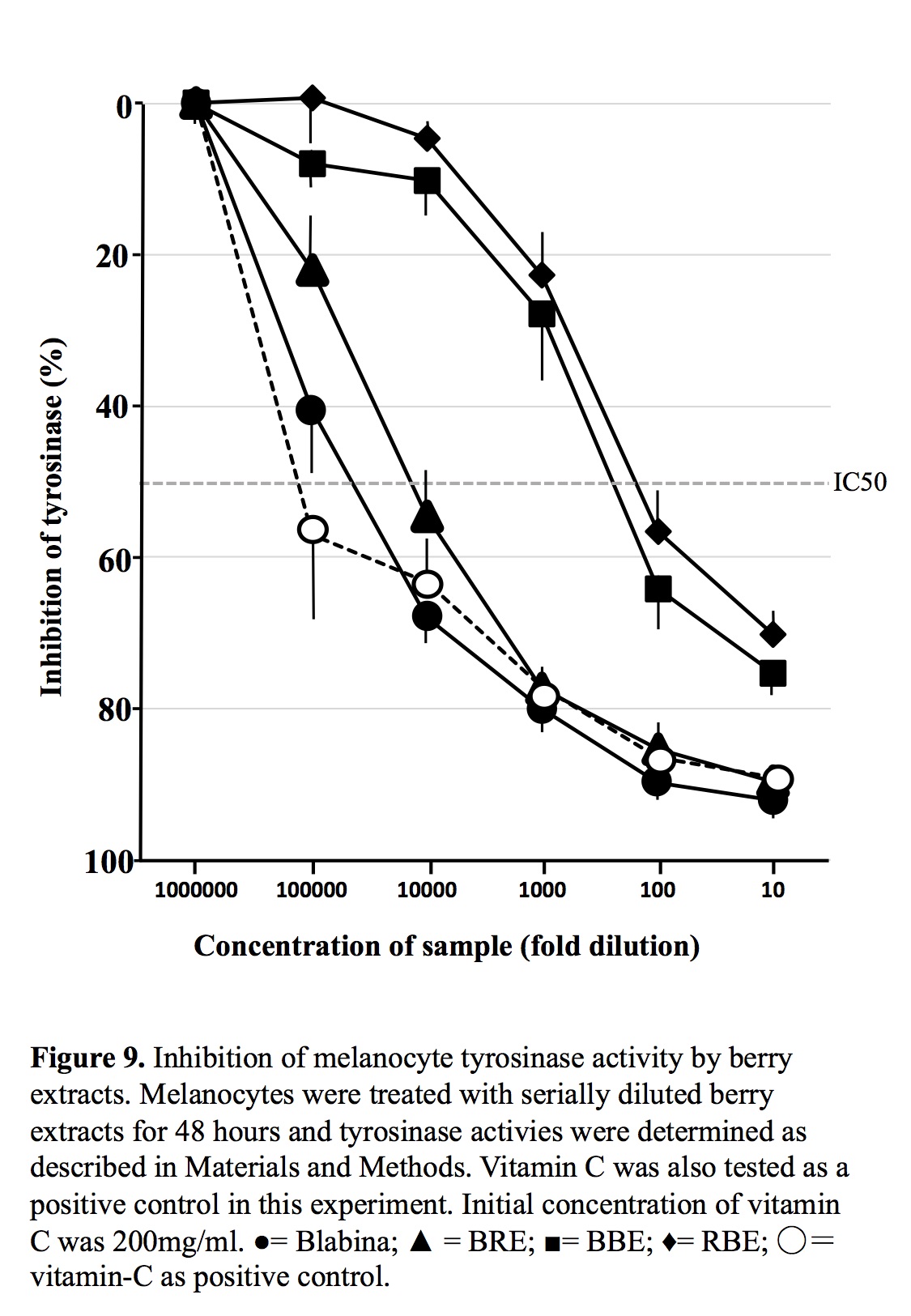Anti-aging effects of black raspberry extract on cataract, alopecia, skin whitening, and weight loss
DOI:
https://doi.org/10.31989/ffhd.v8i1.389Abstract
Background: To maintain good health, it is important to eliminate extra reactive oxygen generated in the body. Furthermore, ingesting foods containing antioxidants is beneficial. The oxygen radical absorbance capacity (ORAC) values for black raspberry extract (BRE), blueberry extract (BBE), and raspberry extract (RBE) are 62, 66, and 49 µM Trolox equivalents (TE)/g respectively. These values are higher than those for typical antioxidant foods that have been discovered so far (3–30 µM TE/g). Our aim was to find new functionality from the food with the high ORAC value. Therefore, we have prepared these four berry extracts and examined whether they have anti-aging effects and if those effects correlate with their antioxidant activities.
Methods: We studied the following effects of 4 berry extracts: 1) lens cell protective effects; 2) effects against alopecia; 3) induction of uncoupling protein-1 (UCP1), a regulator of fat and energy consumption in adipocytes, and stimulation of irisin secretion from skeletal muscle cells; and 4) inhibitory effects on melanocyte tyrosinase activity. The evaluation method was based on below; 1) a-crystallin, type 17 collagen, heat shock protein 47 (HSP47), UCP1 and Irisin - mRNA by qRT-PCR, 2) the amount of the UCP1 and Irisin protein by ELISA. 3) Inhibition of tyrosinase activity was measured by dopachrome production using L-tyrosine.
Results: In lens cells, a-crystallin mRNA expression was induced 1 hour after treatment of the cell with Blabina (a powdered formulation containing BRE) and BRE. The extracts of all four berry species promoted the growth of follicle dermal papilla cells by 3-20% in a concentration-dependent manner. These berry extracts were also discovered to markedly induce the expression of mRNAs of type 17 collagen and HSP47 in the hair follicle stem cell and elevate the expression levels of UCP1 mRNA and its protein in adipocytes in a concentration-dependent manner. BRE and Blabina inhibited 5a-reductase in follicle dermal papilla cells and tyrosinase activity in melanocytes at the concentrations which inhibited dopachrome production by at least 50%. Finally, Blabina was discovered to stimulate the irisin secretion from skeletal muscles.
Conclusion: These results suggest that berry extracts, particularly BRE, have anti-aging effects through their higher antioxidant activities.
Keywords: Anti-aging; antioxidant; alopecia; black raspberry; weight loss; oxygen radical, absorbance capacity; skin whitening

Downloads
Published
Issue
Section
License
Any manuscripts or substantial parts of it, submitted to the journal must not be under consideration by or previously published in any other journal or citable form. Authors are required to ensure that no material submitted as part of a manuscript infringes existing copyrights or the rights of a third party. In submitting one's article in any form, the author has assigned the FFC publishing rights and has agreed to an automatic transfer of the copyright to the publisher. This is so that the FFC may create print option journals, for example, at the FFC’s discretion. If the author wishes to distribute their works by means outside of the FFC, for example within their community, they will have to place a request.
Correspondence concerning articles published in Functional Foods in Health and Disease is encouraged. While derivative works (adaptations, extensions on the current work, etc.) are allowed, distribution of the modified material is not allowed without permission from the FFC.